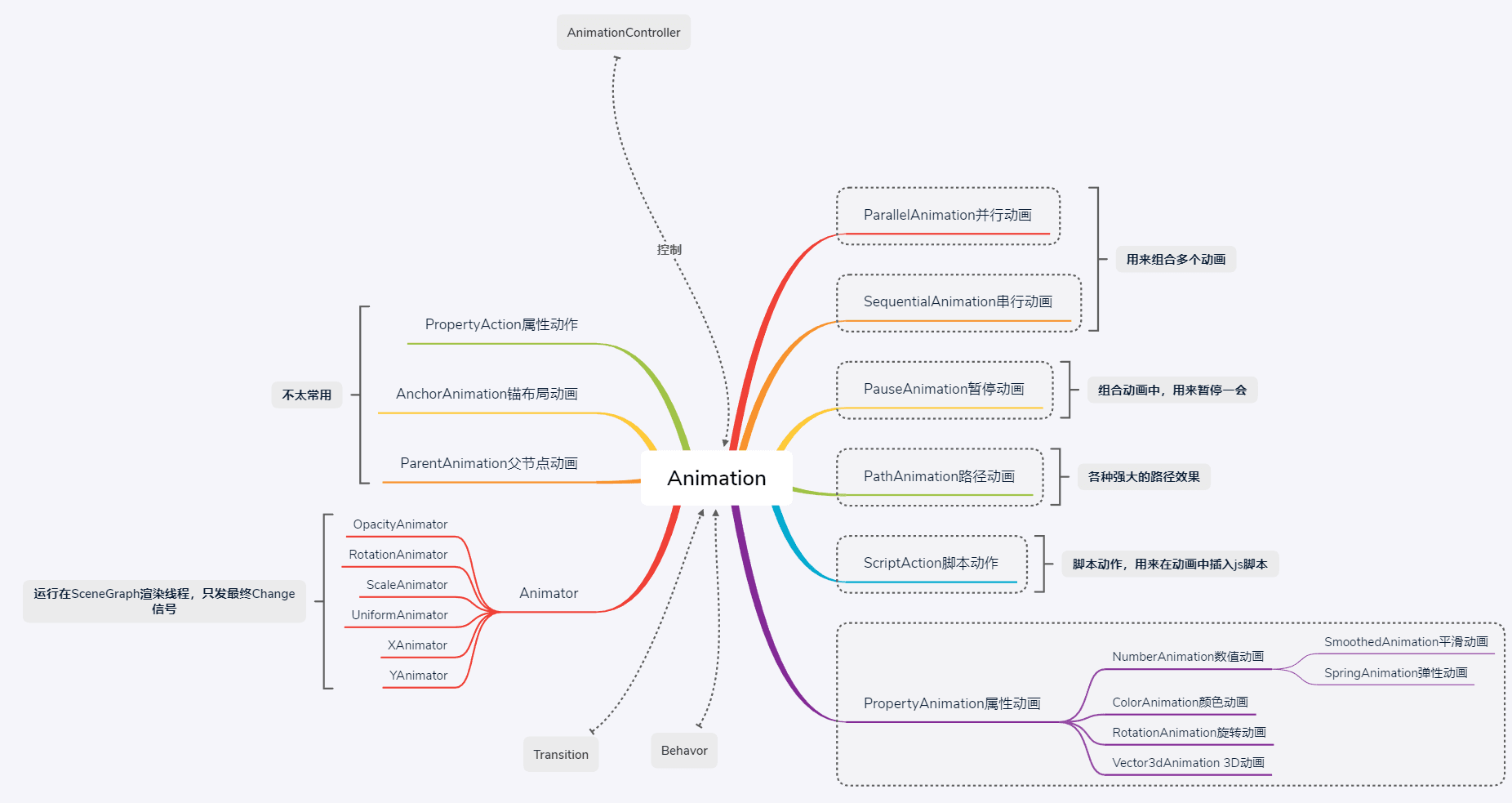-
UID:176218
-
- 注册时间2016-10-15
- 最后登录2019-12-19
- 在线时间19小时
-
- 发帖52
- 搜Ta的帖子
- 精华0
- 金钱577
- 威望64
- 贡献值0
- 好评度54
-
访问TA的空间加好友用道具

|
Qml特效14-跟上节奏作者 涛哥目录ShaderEffect跟上节奏 效果源码 简介 这是《Qml特效》系列文章的第14篇,涛哥将会教大家一些Qml特效和动画相关的知识。前12篇是进场动画效果 参考了WPS版ppt的动画,12种基本效果已经全部实现,可以到github TaoQuick项目中预览:进场动画预览因为效果都比较简单,就没有写太多说明。没有13没有13没有13从14篇开始,做一些特殊的效果和动画,同时会讲解相关的知识。 关于文章 文章主要发布在涛哥的博客 和 涛哥的知乎专栏-Qt进阶之路 跟上节奏 效果预览 跳动的字节,以及倒影 其中用到的知识点有: Qml动态创建组件、Qml随机数生成、Qml给Item拍照(layer属性)、Qml翻转。当然还有一些预备知识:做特效和动画,要用到QtQuick的动画系统,以及ShaderEffect特效。 QtQuick动画系统 动画组件 Qt动画系统,在帮助文档有详细的介绍,搜索关键词”Animation”,涛哥在这里说一些重点。涛哥用思维导图列出了Qml中所有的动画组件: 其中用到的知识点有: Qml动态创建组件、Qml随机数生成、Qml给Item拍照(layer属性)、Qml翻转。当然还有一些预备知识:做特效和动画,要用到QtQuick的动画系统,以及ShaderEffect特效。 QtQuick动画系统 动画组件 Qt动画系统,在帮助文档有详细的介绍,搜索关键词”Animation”,涛哥在这里说一些重点。涛哥用思维导图列出了Qml中所有的动画组件:
右边带虚线框的部分比较常用,是做动画必须要掌握的,尤其是属性动画PropertyAnimation和数值动画NumberAinmation。
常见的各种坐标动画、宽高动画、透明度动画、颜色动画等等,都可以用这些组件来实现。
底下的States、Behavior 和 Traisitions,也是比较常用的和动画相关的组件。可在帮助文档搜索
关键词”Qt Quick States”、”Behavior”、”Animation and Transitions”。后续的文章,涛哥会专门讲解。
左边的Animator系列,属于Scene Graph渲染层面的优化,其属性Change信号只在最终值时发出,不发出中间值,使用的时候需要注意。
顶上的AnimationController,属于高端玩家,用来控制整个动画的进度。
动画的使用 用例一 直接声明动画 直接声明动画,指定target和property,之后可以在槽函数/js脚本中通过id控制动画的运行。也可以通过设定loops 和 running属性来控制动画 用例二 on语法 on语法可以使用动画组件,也可以用Behavior,直接on某个特定的属性即可。效果一样。on动画中,如果直接指定了running属性,默认就会执行这个动画。也可以不指定running属性,其它地方修改这个属性时,会自动按照动画来执行。示例代码 on动画示例代码 Behavior 动画 用例三 Transitions或状态机 过渡动画和状态机动画,本质还是直接使用动画组件。只不过是把动画声明并存储起来,以在状态切换时使用。这里先不细说了,后面会有系列文章<Qml特效-页面切换动画>,会专门讲解。 ShaderEffect 动画只能控制组件的属性整体的变化,做特效需要精确到像素。Qml中提供了ShaderEffect这个组件,就能实现像素级别的操作。Qml中有一个模块QtGraphicalEffects,提供了部分特效,就是使用ShaderEffect实现的。使用ShaderEffect实现特效,需要有一些OpenGL/DirectX知识,了解GPU渲染管线,同时也需要一些数学知识。大名鼎鼎的ShaderToy网站,就是使用Shader实现各种像素级别的酷炫特效。ShaderToy作者iq大神ShaderToy上面的特效都是可以移植到Qml中的。使用Shader开发,需要一定的图形学知识。其中使用GLSL需要熟悉OpenGL, 使用HLSL需要熟悉DirectX。 跟上节奏 效果源码 组件的封装 封装了一个组件TSoundByte 大致原理 这里的soundComp就是一个Component组件,在槽函数/js函数中,可以用id去动态创建。soundComp.createObject(r, {“x”: px, “y”: py, “visible”: false})涛哥一次性创建了n * m 个Component,都设置好相对的坐标,存储到objPool数组中。visible属性根据预定义的数组map来控制。之后在定时器中,用一个随机高度去刷新map。然后再更新objPool中的visible即可。 组件的使用 倒影效果原理 先是实例化了一个TSoundByte组件,id为src,之后又在实例src的坐标下面,放了一个ShaderEffectSource,指定其sourceItem为src。这样就有了src的一个复制品mirror。然后把mirror翻转180度,透明度调一下,就变成倒影效果了。
|